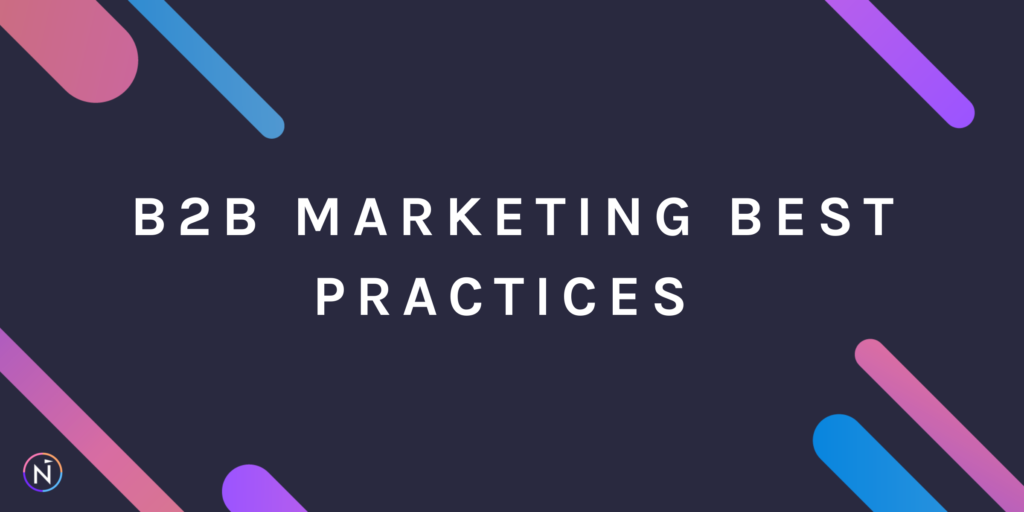Picture this: I’m attending a conference in downtown Denver. I’m diligently taking notes, like any good conference attendees do, during a panel of business owners discussing the importance of business branding. An audience member gets up and asks, “I’d like to hear from *panel member,* because I’ve heard a lot about B2C but I’m wondering how this advice changes for B2B.” One panelist (not the B2B expert) interjects, “There’s no such thing as B2B marketing. There’s always a consumer.”
My jaw drops.
It’s been over three years since that panel and I haven’t forgotten it.
Because the reality is that B2B marketing practices can be very different from general B2C recommendations.

What’s B2B marketing?
Business-to-Business (B2B) is a form of transaction between businesses, such as one involving a manufacturer and wholesaler, or a wholesaler and a retailer. Business-to-business refers to business that is conducted between companies, rather than between a company and individual consumer”
Source: Investopedia
I took the long way around with that story because I’m trying to stress the importance of really understanding the best practices of the marketing that will really fit for each business scenario. If I could go back, I might bring up some of the ways that B2B and B2C differ. Let’s jump into some B2B marketing best practices!
Smart email marketing.
Email marketing can encompass a whole bunch of different practices, but I’m really going to hone in on providing value no matter what avenue or context the emails are being sent in. Every email that is sent should be smart, to the point, and provide value to the customer.
What this looks like?
- A/B Test Email Subject lines.
- Work in-depth with your sales team to ensure that all of your email communications are sticking to brand guidelines, both visually and tonally.
Keep an ear to the ground with your customers.
It can be a little bit more challenging to hear from your customers in B2B than it can in B2C. I’m going to use the example of selling shoes versus selling software. Marketing may very well be wearing the same sneakers as their customers and as the sales team and as the logistics team. It’s a lot easier to be the consumer of your own pro.
Now, I am a big fan of using your own product (spoiler: we use Net-Results for our marketing automation) — but what if your company isn’t representative of your Ideal Customer Profile (ICP)? If you’re a big company whose primary target includes small companies? It’s a little harder to get the “in” on those customers sometimes.
So talk to them! Listen to and share their stories. Work on developing case studies filled with them. Read the reviews they leave your company or the support tickets they submit. Ask your CS, sales, or account management teams to include a few questions that will help you keep a pulse on what your ideal customers are looking for so that you can create more value for people just like them!
Mold your sales process to your customers.
Instead of trying to get your customers to fit into your mold, try to fit into theirs.
It can be a frustrating process, but a lot of marketing and sales means meeting people where they’re at. Really have conversations with people about what they’re working on and actually consider if your product will be a good fit for them.
Also, make sure your practices allow the flexibility that your ICPs may desire. Something as simple as keeping your ear to the ground and offering billing cycles that really suit the businesses you’re catering to, like offering yearly contracts that adhere to their fiscal year instead of your own, can make a huge difference in a person’s perception of a brand.
Want to learn more about B2B marketing? Check out these blog posts:

